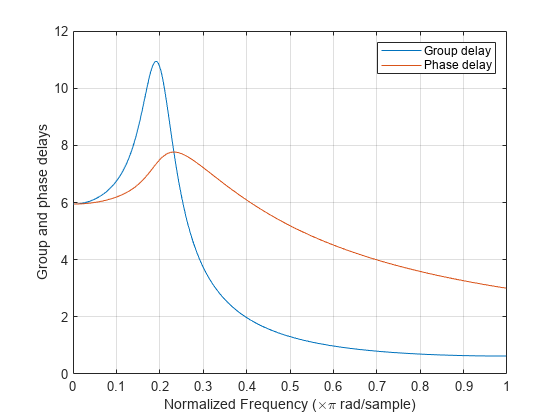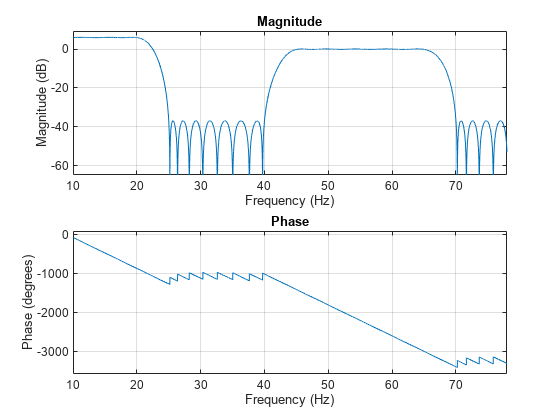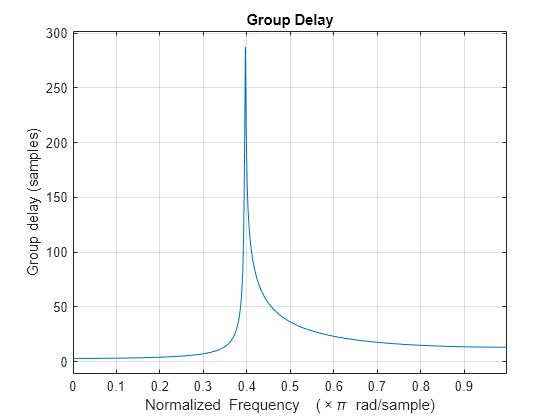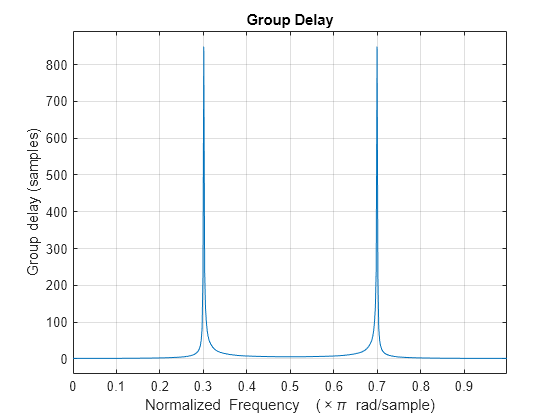grpdelay
Average filter delay (group delay)
Syntax
Description
[
returns the gd,w] = grpdelay(B,A,"ctf",n)n-point group delay response of the digital filter
represented as Cascaded Transfer Functions (CTF) with numerator coefficients B and denominator coefficients
A. (since R2024b)
grpdelay(___) with no output arguments plots the
group delay response of the filter.
Examples
Input Arguments
Output Arguments
More About
Tips
References
[1] Lyons, Richard G. Understanding Digital Signal Processing. Upper Saddle River, NJ: Prentice Hall, 2004.
Extended Capabilities
Version History
Introduced before R2006aSee Also
Apps
Functions
ctffilt|cceps|designfilt|digitalFilter|fft|freqz|hilbert|icceps|phasedelay|rceps






